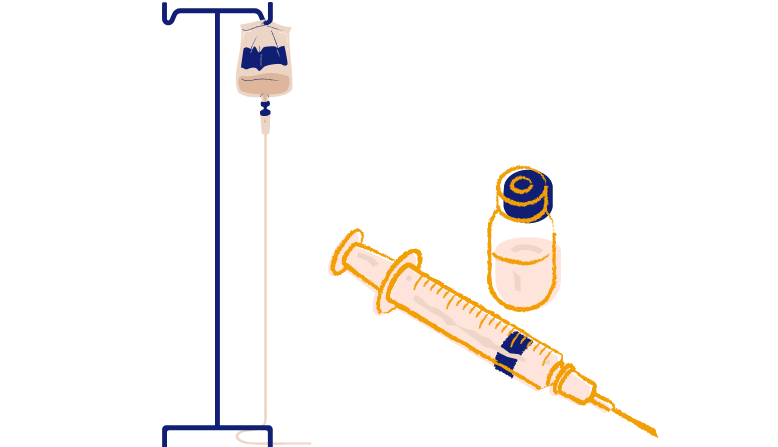Your Treatment Options
For psoriasis, treatment options often include:
It's important to find an effective treatment to clear your skin symptoms and address the systemic inflammation that drives psoriasis, because it raises your risk for other health problems, even with mild symptoms. There is no one treatment that works best for everyone, so you may have to try a few until you find the one that's best for you.

For psoriasis, treatment options often include:

Topical treatments are applied to the skin and can be purchased over the counter or by prescription.

Also known as light therapy, phototherapy involves exposing the skin to ultraviolet light on a regular basis under medical supervision.

Oral treatments are small-molecule medicines that are taken by mouth. The latest oral treatments selectively target specific molecules inside immune cells.

Biologic drugs, or biologics, are given by injection (shot) or intravenous (IV) infusion. A biologic is a protein-based drug derived from living cells cultured in a laboratory.
The type of treatment your health care provider may prescribe will depend on a variety of factors including the location and severity of your psoriatic disease, your medical history, and whether you are an adult, teen, or child.
Psoriasis is a chronic, systemic disease, which means the whole body is affected, even if the visible symptoms are mild. Your provider should work with you to find a treatment that addresses the body-wide inflammation associated with the disease.
There are other ways to help manage psoriatic disease alongside treatment. These include physical therapy, occupational therapy, quitting smoking, weight management, massage therapy, and exercise.
The following are some questions that you may want to ask when deciding which treatment may be best for your psoriatic disease.
Here are sources that can help you learn about your options:
Living with psoriatic disease often requires frequent medical appointments and prescription treatments. It may be hard to keep up with the cost of your appointments and treatments when you are uninsured (do not have health insurance). Even people with health insurance may find it hard to access the care they need when their coverage still leaves them paying high costs. This is often referred to as being “underinsured.”
Whether you are uninsured or underinsured for a short- or long-term, here are some options that may help you access health care and treatments affordably.
At this time, there is no cure for psoriatic disease, although the NPF is funding research to better understand the disease and develop a cure. Although some individuals may go into remission (no signs or symptoms of disease activity) it is very likely that the symptoms will return at some point (also known as a flare).
For many people, reducing skin and joint symptoms are the main goals of treating your psoriatic disease. You may have other treatment goals and other ways to see how a treatment is working for you.
The National Psoriasis Foundation (NPF) and the American Academy of Dermatology (AAD) issued a set of treatment targets for people with psoriasis and their health care providers. These targets do not recommend a specific kind of treatment, since treatments may work differently for different people. The targets set a goal of how much improvement you should expect to see after a certain amount of time.

*It may be acceptable to have less than 3% of your BSA affected by psoriasis (or have experienced 75% improvement) at this time.
The Treat to Target goal is to get your psoriasis down to 1% of body surface area (BSA) or less in 3 to 6 months after starting a new treatment. You can measure your BSA and track your progress on your own. Your entire hand (the palm, closed fingers, and thumb) is equal to about 1% of your BSA.
Because psoriatic arthritis can cause permanent joint damage if not treated, your health care provider may recommend following a treat to target approach. This approach could delay or prevent further joint damage and could decrease pain and improve quality of life.
Once you have reached that 1% goal, you should check in with your health care provider every 6 months to make sure you are maintaining the level of clearance.
Learn more about sticking to your treatment plan and caring for your overall health so you can keep thriving.

Listen as dermatologist Dr. Brad Glick and rheumatologist Dr. Arthur Kavanaugh discuss treatments from topicals to biologics and what factors impact their treatment decisions.

Request your free resource to learn more about oral systemic, biologic, and biosimilar treatments (together called systemic treatments).
We use cookies to offer you a better experience and analyze our site traffic. By continuing to use this website, you consent to the use of cookies in accordance with our Privacy Policy.